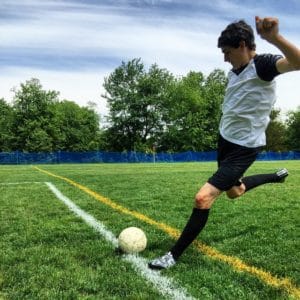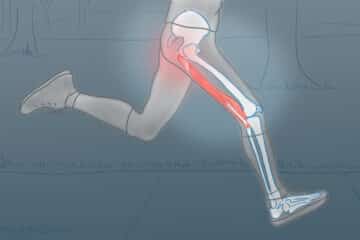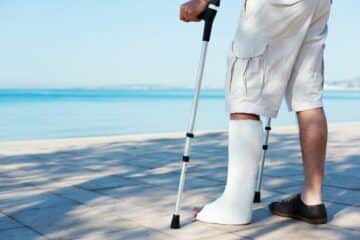
Injury prevention has for too long taken a back seat to injury management and athletic performance. I am so pleased to have Dr Daniel Lorenz contribute this well written post on why we need to focus on injury prevention… and how it will ultimately help you achieve your goals of improved performance.
Without question, the biggest risk of injury is having a previous injury. Once you have an ankle sprain, your risk of chronic ankle instability is 70% (Hubbard & Ekstrom, J Sports Med 2010) and the risk of sustaining another one increases by 19x (Tyler et al, Am J Sports Med 2006). Tommy John surgeries are through the roof in young baseball players, with some estimates showing a 200% increase since 2000 (Hodgins et al, Am J Sports Med 2016). Young female athletes continue to tear their ACL’s at a rate of 2-8x that of males (Zazulak et al, Am J Sports Med 2006), with the highest risk being in soccer and basketball. It is well established that 75% of these injuries are non-contact in nature. Particularly with ACL injury prevention, the data is fairly convincing that a comprehensive injury prevention program can significantly reduce ACL injuries, sometimes up to 88% (Mandelbaum & Silvers, Am J Sports Med 2005; Gilchrist et al, Am J Sports Med 2008). It seems intuitive that injury prevention training should be an integral part of long-term athletic development.
Prevention: the act of preventing; A hindrance, obstacle, or impediment
Performance: the execution or accomplishment of work, acts, feats, etc.
Sports Specialization And Sports Injuries: Are We Injuring Our Children?
What complicates matters further is that young athletes are participating in sports year-round, which has led to an astronomic rise in overuse injuries. The risk of overuse injuries is especially evident in kids that specialize in one sport too early. With the rise of travel leagues, showcases, specialty coaches, and schedules filled with practices and games, kids are beat up and burnt out. Despite the data showing the benefit, there is little engagement from parents and coaches on injury prevention. Instead, parents and coaches only seem to be interested when fitness coaches talk about “performance enhancement.” The purpose of this post is to explain why we got it all wrong and why we need to think differently as a society on the topic of injury prevention as a means of improving performance—and the health of our children.
Injury Prevention v. Performance Enhancement
First, let’s talk about injury prevention. Most injury prevention programs include strengthening, balance and flexibility training, education on proper movements/positions to avoid as well as jumping/landing patterns. Let’s face it, it’s not exciting. It’s not “sexy.” Think about anything that’s safety or prevention-related. When was the last time you listened to the flight attendant about the plane safety features? From an exercise standpoint, many injury prevention exercises are boring on the surface – they are very basic movements that well, don’t look like they’re doing much of anything. That’s where we get it all wrong though.
Key Components of a Comprehensive Injury Prevention Program
- Total Body Strengthening
- Education on proper landing, jumping, and cutting techniques
- BalanceTraining
- Flexibility Exercises
- Jump Training

Many injury prevention exercises also are done repeatedly so an athlete learns how to consistently jump, land, and cut properly. Still not convinced? Watch your youngster do a single leg squat and watch that knee collapse inward and their trunk wobble from side-to-side. The single leg squat is a basic assessment that tells us a whole lot about baseline strength and body control.
On the other hand, performance enhancement is cool. It’s like game day. Everyone lives for game day. Agility ladders, boxes, cones, medicine balls, weighted sleds, resisted jumping devices – all the fancy stuff that make people feel that performance is being enhanced. Lots of glitz and glam to make coaches and parents feel better that the kids are “doing something.” Fitness coaches provide lots of data “proving” their methods worked – “Look how much your child’s vertical jump increased!” “Look how much faster he/she is!” The dirty secret is that almost ANY training for an athlete with no formal training will lead to positive changes in these things. All of the performance enhancement tools listed aren’t inherently wrong, but there is a time and a place for them. Many kids haven’t “earned” the right to use them because they don’t have a basic level of strength and haven’t perfected fundamental movement patterns.
5 Reasons Injury Prevention Training Enhances Performance
- If you’re hurt, you’re not performing and there is no performance to enhance! Injury prevention exercises help build the strength and body control so the athlete is able to sustain the repetitive loads and avoid extraneous or aberrant movements that lead to injuries. Many of the injuries seen in doctor’s offices and from rehabilitation professionals are easily avoided with a basic strengthening program.
- By knowing how to cut, change direction, land, and jump more efficiently performance will be enhanced. Your child won’t have wasted movement and due to better movement efficiency, will get from A to B faster. Essentially, they’ll be “first to the ball” compared to other kids who haven’t had this training.
- It will make them stronger and subsequently more powerful. The fastest and most explosive athletes do two things better than anybody: they put more force into the ground and spend as little time on the ground as possible (Weyand et al, J Appl Physiol 2000, 2010; Mann, 2013). The only way to put more force into the ground is to increase strength. That said, the only way to be more powerful and explosive is to be strong – you can’t be powerful, fast, or explosive without strength first. Strength is the foundation for all athletic performance. That’s right, strength. To run faster, cut better, jump higher, and get to the ball first – you have to be strong! Furthermore, being stronger provides the added benefit of the athlete having a better ability to dissipate forces from jumping, cutting, and running. They won’t work as hard to cover the same distances and do the same activity. This does not mean your youngster has to lift heavy weight – it means that they should be able to perform basic movements like a bodyweight squat, single leg squat, and push up with perfect form. Once they can do that, then they can add weights. Compared to kids who cannot perform these basic movements under control, yours will be at an advantage.
- Better balance enhances performance by conserving energy through improved body control as well as improving the ability to sustain contact better. For example, an athlete that is strong and balanced can sustain contact and stay on their feet better than an athlete that isn’t as strong or as balanced. Put another way, you’d prefer to be a brick wall rather than a house of cards on the fields of play.
- More mobility and flexibility enhances performance by maximizing your muscles innate elasticity. Think of a rubber band. The more the rubber band is pulled, the farther is goes on release. Our muscles behave similarly. A joint that moves normally and muscles that are appropriately flexible maximize our ability to move quickly and explosively.
Hopefully, this post has changed your thinking about injury prevention training and that it indeed enhances performance. A comprehensive injury prevention program will maximize your youngster’s potential while at the same time, minimizing risk of “riding the pine” from nagging injuries, or worse, a surgery to fix a major problem.
Dr. Dan Lorenz, DPT, PT, LAT, CSCS is a well-recognized and respected clinician, educator and author in sports and orthopedic physical therapy.
Do you have questions regarding an Orthopedic injury or longevity?
Do you want to talk to an expert who can listen to you for 45-60 minutes and explain the options in detail?
Dr. Howard Luks offers remote guidance sessions to review your X-ray or MRI images and explain your options.
Dr. Luks has also received hundreds of requests for educational sessions on the topics discussed in his book, Longevity Simplified.
Dr. Lorenz is Kansas City’s only sports medicine fellowship-trained physical therapist













